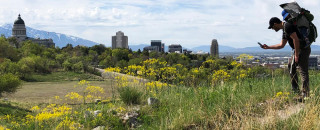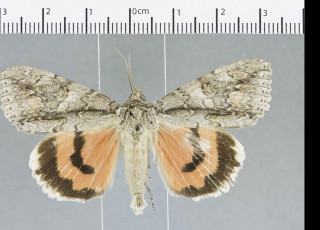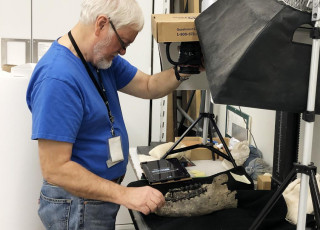Six Ways to Be a Citizen Scientist in Utah
Image ©NHMU, credit: Ellen Eiriksson
By Riley Black
Science is a community endeavor. Not only does it require the skill of professional researchers and experts, but science relies just as much on people who volunteer their time and eagerness to learn. Luckily for Utahns, there's a wealth of ways to get involved with community science. Here are a few highlights to get you started on your path to becoming a citizen scientist.
1. iNaturalist
If you're itching to dive right in, there's hardly a better way to become a citizen scientist than to check out the iNaturalist app. This social media platform brings together people from all over the world, cataloging wildlife from distant locales to your own backyard. Some people have even become experts as they've engaged, and citizen scientists have even made new discoveries through the app.
2. Western Firefly Project
Did you know that there are fireflies in Utah? There are! In fact, fireflies are much more widespread through the Intermountain West than previously thought, and citizen scientists have been critical in illuminating where these charismatic little lightning bugs live. We're just getting to the season when fireflies are visible, in fact, so now's a great time to check out the Western Firefly Project.
3. Wild Utah Project
From the alpine forests and sagebrush-covered deserts to the heart of Salt Lake City, Utah is full of wildlife. Ecologists can only be in so many places at once, though, and so the Wild Utah Project relies on citizen scientists to do everything from identifying animals in camera trap photos to building artificial beaver dams to restore wetland habitats. You don't even have to consider yourself an adventurer to participate. The Wild Utah Project has opportunities for citizen scientists of all backgrounds, from experienced hikers to folks more comfortable watching the backyard birdfeeder.
4. WeDigBio
Museums are vast storehouses of knowledge that host vast collections. Making all that information accessible is a huge task, and WeDigBio is part of an ongoing effort to digitize our museum's collections. By transcribing field notes, scanning drawings, and making digital records of important information held on old media like glass slides, citizen scientists are creating a lasting, searchable record of materials that might have otherwise been lost. Not only does this preserve the information for years to come, but it makes it easier for researchers to find what they're looking for.
5. Tracy Aviary
Salt Lake City and the surrounding area is a hotspot for birds. In order to understand the birds that live in and around the neighborhoods along the Wasatch Front, the Tracy Aviary is running multiple projects in need of citizen scientists. From watching for black rosy finches at birdfeeders to helping with breeding season surveys, there are plenty of ways to get involved.
6. Utah Fox Squirrel Project
Maybe you've seen orange and gray squirrels running around the yard. Those are fox squirrels - relatively new arrivals to Utah - and NHMU researchers want to know more about where these small mammals live and how they're getting used to life in the Beehive State. NHMU's Utah Fox Squirrel Project offers another way citizen scientists can jump right in and start gathering important data.
And those are just some of the ways to get involved! If you'd like more information about citizen science or how to get involved here at the NHMU, contact our volunteer department.
Riley Black is the author of Skeleton Keys, My Beloved Brontosaurus, Prehistoric Predators, and a science writer for the Natural History Museum of Utah, a part of the University of Utah in Salt Lake City. Our mission is to illuminate the natural world and the place of humans within it. In addition to housing outstanding exhibits for the public, NHMU is a research museum. Learn more.



